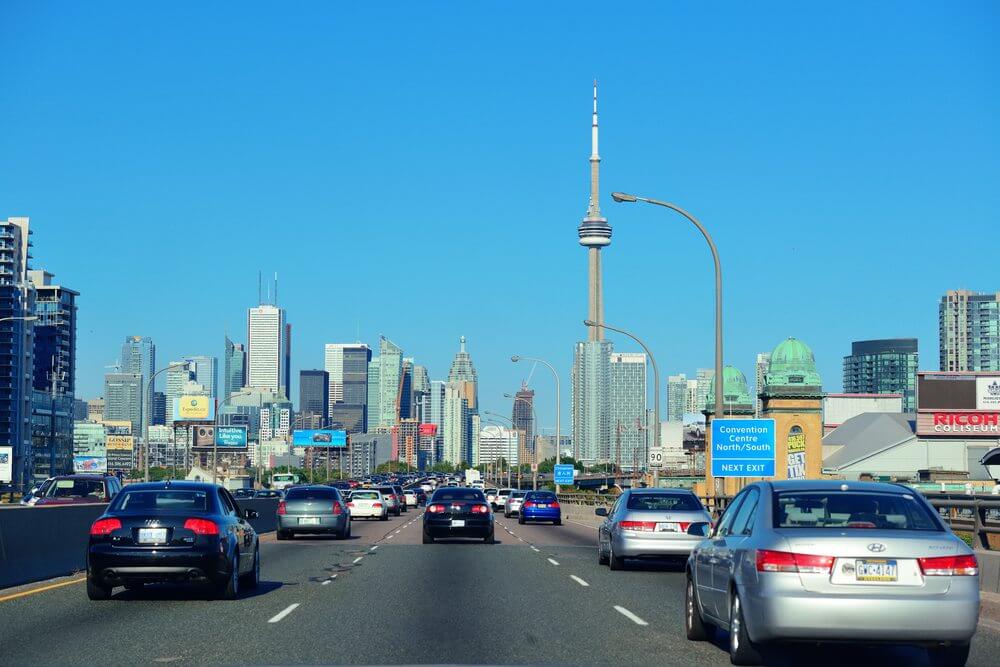We’re very lucky to have a vibrant downtown core in Toronto. Whether you live and/or work in the city or visit regularly from the suburbs, it’s good to know that you can enjoy the ever-changing cultural, social and recreational attractions that downtown has to offer.
But, if you are not a frequent downtown driver, that rapidly evolving scene can mean you are not familiar with some of the new uses of downtown streets that are not quite the same as in the suburbs. And that lack of familiarity can increase your chances of a minor fender bender, major collision repair or, worst of all, an accident that results in personal injury.
The following are among the changes in the traffic patterns and roadway usage in downtown Toronto that have happened in just the last decade or so, and that are continuing to happen today:
1. PUBLIC TRANSIT INFRASTRUCTURE
Especially with new raised and separated street car tracks, like those along Spadina Ave. and Queens Quay West, the city is trying to reduce traffic congestion by increasing the use of public transit. But that means you need to be aware of how to approach separates tracks, or new articulated street cars, to avoid collisions and injuries.
2. DIFFERENT ROAD USERS
Downtown streets are no longer the exclusive domain of cars and trucks. Bicycles are now as much a part of the traffic as any other type of vehicles on many downtown streets. Drivers must take additional safety precautions, including making sure there is at least one metre between their cars and cyclists when passing, shoulder checks to the right before parallel parking, and to the left before opening car doors on the street, to ensure the safety of cyclists and themselves (not to mention vehicle damage).
3. DENSITY
Toronto’s housing boom of the past 10 years has resulted in seemingly countless new condo buildings, and the people and cars that go with them. Not only does that mean more congested roads, but more pedestrians too, many pre-occupied with their cellphones. While speeds are generally slower on downtown streets, you will need to exercise more vigilance and attention than in the suburbs simply because there are more people and vehicles around you.
HOW TO STAY SAFE AND ‘DENT-FREE’ WHEN DRIVING DOWNTOWN
Even if you’ve never encountered a streetcar on the road, by taking just a few precautions you can make sure that you don’t harm any other road users, occupants of your vehicle, or the car itself, while driving downtown.
1. TAKE YOUR TIME
Just like any other unfamiliar area, taking a little more time when driving downtown will help you deal with unexpected traffic circumstances. Yes, other cars and bikes might be whizzing by you, but they’re (hopefully) more familiar with the surroundings.
2. STAY FOCUSED
Not only is it illegal, but it is even more dangerous to use your mobile device while driving downtown versus the suburbs. Situations like a pedestrian entering the roadway or a cyclist pulling up beside you on your right can happen unexpectedly even if you are paying attention. Not paying attention for just a split-second can have serious consequences for everyone involved.
3. IF YOU HAVE ANY DOUBT, YIELD
Especially around transit vehicles, if you’re trying to save time by passing them in the curb lane or going around them to make a right turn, you are putting everyone around you, including other cars, transit riders, cyclists and pedestrians, at risk. Unless you are absolutely sure you can safely travel with or pass other vehicles, including buses, streetcars and bicycles, let them have the right of way.
We hope you never have a collision, especially one that involves personal injury. By exercising some simple precautions, you can enjoy Toronto’s downtown attractions safely.
* Image provided by Songquan Deng / Shutterstock.com

